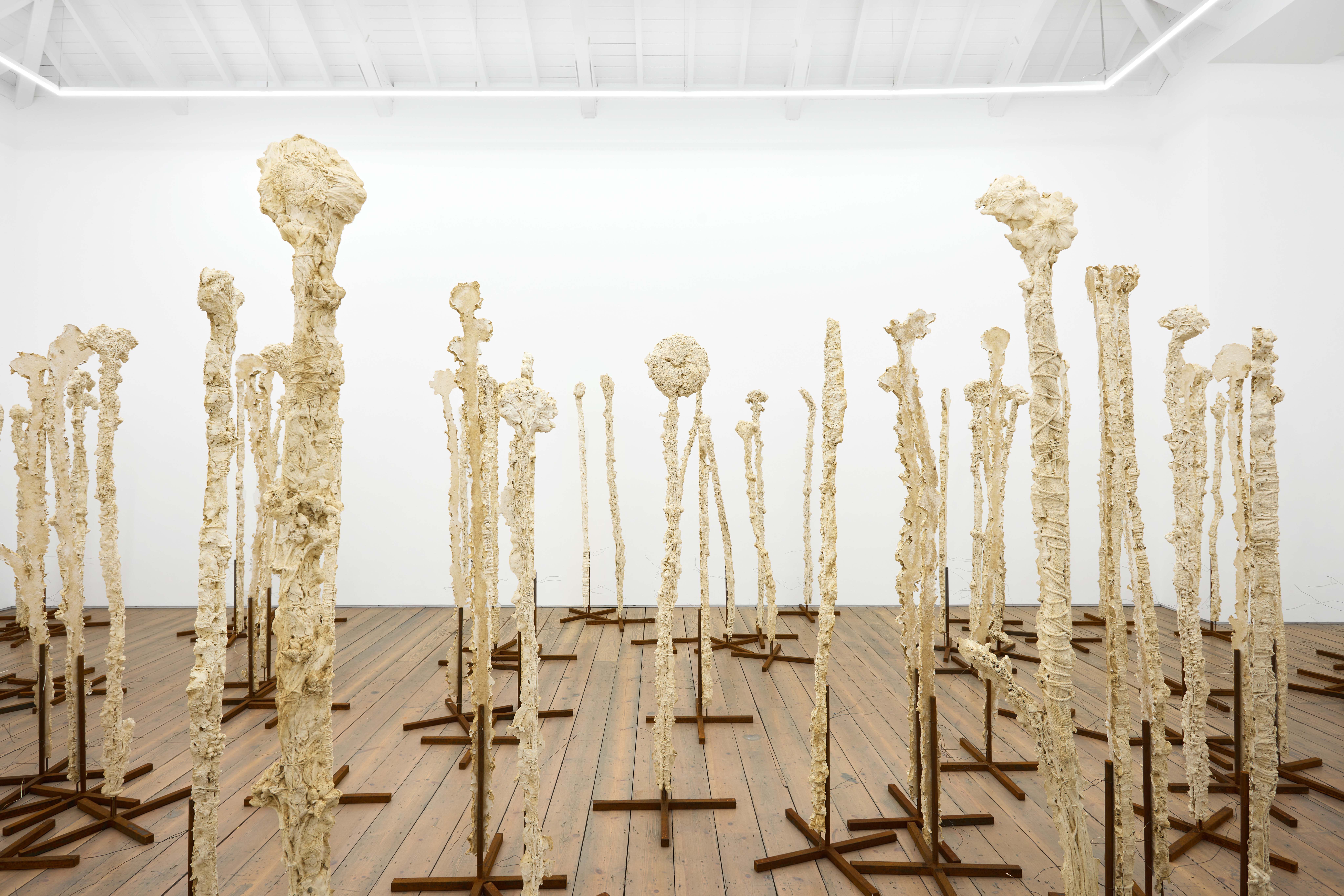29 May 2024 As 130 galleries take part in this year's fourth edition of the event, Ben Luke and Louisa Buck roundup some of their exhibition highlights, from John Baldessari to Michaël Borremans, Nan Goldin to BLCKGEEZER.
Not surprisingly for what is the largest event of its kind in the world, London Gallery Weekend offers an eye-watering variety of work in all media in spaces ranging from the gritty to the glitzy.
But it’s a reflection of our turbulent, troubled times that there is a noticeably more sombre critical spirit to much of what is on show, whether Nan Goldin’s searing elegy to her late sister in Gagosian’s pop-up in a former Welsh chapel; Jacqueline de Jong’s paintings exploring the human cost of the conflicts in Gaza and Ukraine at Pippy Houldsworth or Harminder Judge’s ritualistic funereal Ghost Dance at both Sunday Painter and Matts Galleries.
This year’s headline performance comes from the radical Turkish Feminist artist Nil Yalter, the winner of a lifetime achievement Golden Lion at this year’s Venice Biennale and known for her work relating to immigration and women’s experience, while there’s also an undertow to John Akomfrah’s specially commissioned LGW banners, which carry over diasporic themes and images from his British pavilion at the Venice Biennale.
But as our roundup of the best shows in central, south, east and west London confirms, seriousness comes in many and various forms…
Jodie Carey: Guard
Edel Assanti, 30 May - 23 August

Jodie Carey: Guard, installation view, Edel Assanti, London, 2024. Photo: Tom Carter.
The significance of Jodie Carey’s title for her installation at Edel Assanti is clear immediately as you confront it: a gathering of tall sentinel-like sculptures based on flowers that have been transformed through a complex sculptural process. The forms are made using earth-casting: Carey wraps plants with cloth and thread before pressing the sculptures into soil to form a mould, into which she pours jesmonite. Like much of Carey’s work, the sculptures at once encapsulate that technique but exude an almost spectral strangeness. They also challenge the monumental history of sculpture, particularly in reference to flowers’ commemorative or nationalistic symbolism; it is no accident that Carey’s sentinels also evoke shrouded or etiolated bodies.


